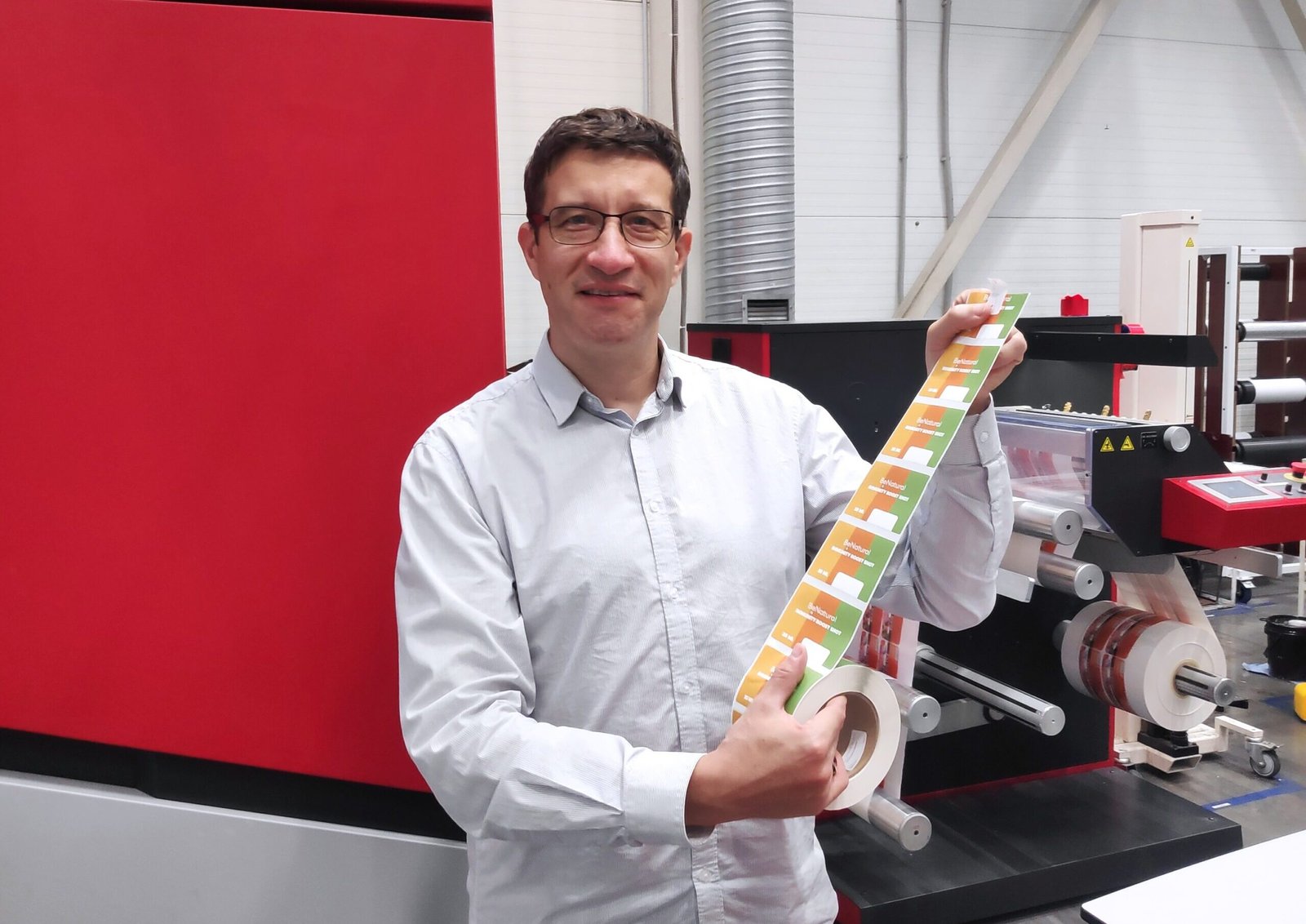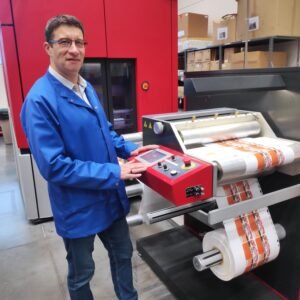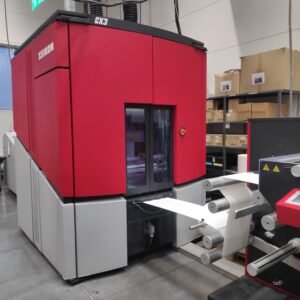Digital label printing: when speed, precision and diversity are the key

Digital label printing is as popular today as the traditional printing methods used for decades. While it’s not a panacea for all orders without exception, where speed and ultimate accuracy are required, nothing compares to digital printing.
Digital printing of labels was introduced only three decades ago, but today this technology is already as commonly used in printing houses, as is UV flex, offset, and engraving. Why?
Speed and high precision – even with variable labels
“Digital printing is entering an area where other printing methods are inadequate or simply powerless. If speed, very small text or labels with variable elements are mentioned as the main priorities in the customer’s wish list, then digital printing is definitely the most appropriate solution,” said Žilvinas Salatka, Product Manager of PakMarkas, the leading product label printing company in the Baltic States. 
Traditional flexographic printing is inseparable from the production of clichés – printing forms. Forms are prepared separately for each print run, which prolongs the order execution time, as it takes several days to manufacture clichés alone. Digital devices operate on a completely different principle, without the use of physical printing forms. Related to this is another feature of digital machines: the ability to print variable products with different texts, barcodes or even images.
“Flexographic technology is not capable of accomplishing such a task because every change in a label, even a minor change in a single character or shade, would require a change of cliché. This is physically impossible. Therefore, conventional printing is only for batches of labels where the products are completely identical. Meanwhile, it is possible for a digital machine processor to print different texts; it manages to change them in time,” explains Ž. Saladka.
The extremely accurate and uniform colours are another advantage of digital printing, and perhaps the most important one. Digital technologies in the field of printing (as elsewhere) completely or partially eliminate human intervention in the process, correspondingly making the quality and accuracy higher. In flexography, images are printed by four human-adjustable clichés, while digital printing is done by four machine drums, which combine colours much more accurately and dispense the amount of each component more precisely.
Especially relevant for the food industry
While there are many different digital technologies, only one is currently considered the best. This is EP or electrophotography, which is most valued for its precision.
“This technology is used to print small elements such as barcodes (especially 2D) and other text or images with high precision. It prints CMYK and negative text very nicely (for example, white letters on the background of a photo), and the printed elements can be very small without compromising the quality, while the result will be identical to the standard every time,” added the PakMarkas representative. All these possibilities allow for printing ornate and exclusive labels, not necessarily in large editions, without significant printing costs.
It is also very important for consumer product manufacturers that product labels look identical. But what happens if one batch of labels is produced in the traditional flexographic way and others digitally? The difference between the two lots is obvious. The result of some digital technologies is very different from the result of flexography, others less so. That is why PakMarkas specialists selected the digital label printing equipment with particular care, looking for one that would enable significant differences between flexographic and digital printing to be avoided.
“Digital printing, not just labels, but also advertising and the like, has taken hold for three main reasons: fast performance, personalisation options and process automation. And if at the very beginning of their era those who wanted to print digitally faced the challenges of quality and material selection, today technology already enables fast, extremely high-quality results to be achieved when printing on many conventional materials,” commented Dominykas Lebskis, Sales Department Manager at Libra Vitalis, a professional printing equipment company.
Pakmarkas is currently using Xeikon digital machine capable of printing at an extremely high resolution of 800 or even 1200 dpi. This machine makes it possible to print secret inscriptions in black that are invisible to the naked eye and can only be read with a magnifying glass. It allows the use of intense white on a transparent adhesive PP film.
No less of an advantage is the possibility of variable printing: for example, variable number or letter numbering can be used for printing in a customer’s preferred font or after preparing many images, printing them one by one on the next label (sequential or random), which is especially relevant in these times of personalised marketing.
“It is very important that the digital inks we use should be able to come into direct contact with food,” said Ž. Salatka, emphasising the feature of the technology used. “Due to the non-toxic nature of the ink (it does not contain carcinogens), Xeikon Dry Toner technology is completely harmless and therefore is very suitable for food labels. Given its other features, such as colour and graphic accuracy or the possibility of negative text, this technology is particularly suitable for printing labels on premium class products (gourmet, delicacies, vegetarian and vegan products).
The PakMarkas digital printing device excels not only in high-quality product indicators, but also in the fact that it is environmentally friendly. The printing process uses human-friendly ink, which do not emit gas or liquids; and there is no wastage of ink, and minimal waste of material, due to the fact that the colours are combined in a very short time. As already mentioned, there is no need to produce clichés, which means that there is no need to store these forms and subsequently to recycle them.
“We chose not only a high-quality device that exactly meets specific requirements, but also one that would be safe for customers and our employees who work with it,” noted the PakMarkas specialist.